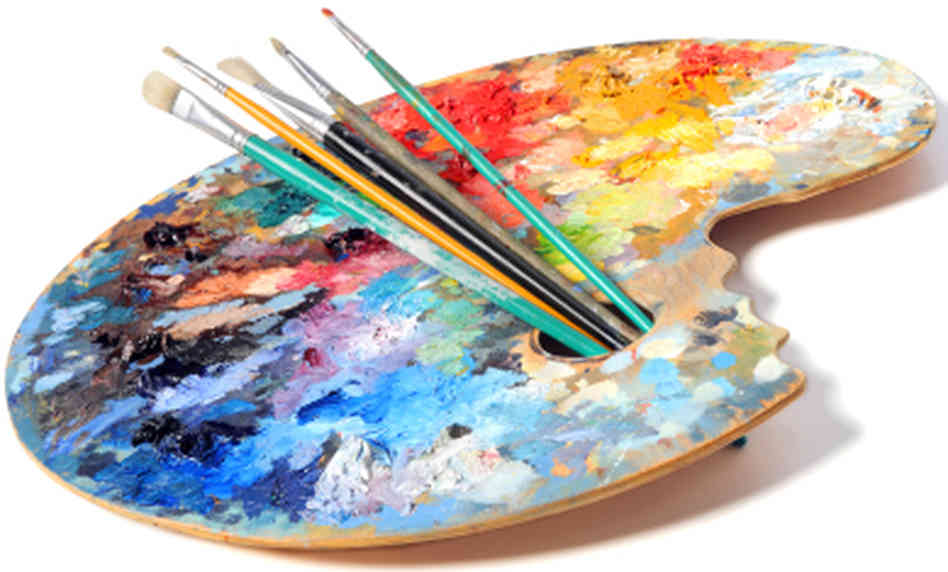Delving Into the Diverse Globe of Artistic Expression: From Surrealism to Abstract Realistic Look
In the realm of imaginative expression, from the dreamlike landscapes of surrealism to the complex play of light and type in abstract realism, artists have continuously pushed the boundaries of creative thinking and imagination. As we explore the diverse world of art, we are provided with a tapestry of designs, methods, and approaches that challenge our understanding and provoke consideration.
Surrealism: Letting Loose the Subconscious
Surrealism, a progressive imaginative motion of the 20th century, looked into the midsts of the subconscious, unveiling a world of dream-like imagery and non-traditional associations. Pioneered by musicians like Salvador Dali, René Magritte, and Joan Miró, Surrealism looked for to challenge the standard means of seeing and understanding art. With techniques such as automatism and dream analysis, Surrealist artists intended to use the unconscious mind to expose surprise realities and wishes.
Among the key components of Surrealism was the emphasis on the irrational and the remarkable. By combining unexpected elements in their works, Surrealist artists intended to develop a sense of disorientation and shock in the viewer. This interruption of logic and reason was suggested to prompt a much deeper expedition of the subconscious and the mysteries of the human psyche.
Abstract Realistic Look: Redefining Assumption
Challenging traditional artistic limits, Abstract Realistic look redefines perception via the fusion of recognizable elements with abstract forms. This cutting-edge technique to art integrates the representational accuracy of realism with the creative liberty of abstraction, supplying visitors an unique aesthetic experience that motivates them to question their assumption of fact.
In Abstract Realism, artists strive to capture the essence of their subjects while likewise instilling their deal with a feeling of depth and intricacy with abstract aspects. By blending the knowledgeable about the unfamiliar, these artists invite target markets to engage with their pieces on numerous levels, urging them to explore the nuances of shade, appearance, and type.

Cubism: Breaking Up Reality
Using fragmented viewpoints and geometric forms, Cubism reinvented the creative representation of reality in the very early 20th century. Created by Pablo Picasso and Georges Braque, Cubism sought to test conventional concepts of point of view and depiction. By breaking down objects and numbers into geometric shapes and providing them from multiple perspectives concurrently, Cubist artists aimed to record the essence of the subject instead of its literal look. This strategy not only deconstructed truth yet also stressed the monotony of the canvas, leading the way for future abstract art motions.

Cubism can be categorized right into two click site primary stages: Analytical Cubism, identified by monochromatic color schemes and elaborate, fragmented types; and Synthetic Cubism, which integrated collage elements and brighter colors into the structures. With these distinctive stages, Cubism affected not only paint however also sculpture, design, and design. trump art. Its influence resounded across the art world, inspiring artists to discover brand-new ways of representing the globe and interpreting around them
Expressionism: Feelings on Canvas
Exploring the depths of human feelings through meaningful and vivid brushstrokes, Expressionism became a profound creative activity in the early 20th century. Unlike previous art activities that focused on illustrating the external globe, Expressionism explored the interior world of the artist's mind, aiming to evoke raw feelings and prompt visceral actions from customers.
Expressionist musicians, such as Edvard Munch, Egon Schiele, and Emil Nolde, turned down conventional ideas of appeal and realism for distorting type and shade to communicate subjective sensations. Using exaggerated brushwork, vibrant shades, and altered numbers helped develop a feeling of unease, alienation, or interest in their works.
One of the most renowned examples of Expressionism is Munch's "The Scream," which captures the intense anxiety and anguish of modern life via its swirling, distorted figure versus a blood-red sky. With their psychologically charged works, Expressionist musicians looked for to challenge standard imaginative standards and give a home window into the stormy depths of the human heart.
Contemporary Art: Developing Perspectives

Among the specifying features of contemporary art is its continuous development and capability to adjust to changing social landscapes. Artists are progressively integrating modern technology into their technique, blurring the lines in between the physical and digital realms. This combination of mediums permits innovative ways of storytelling and involving with audiences in a much more interactive fashion.
Moreover, contemporary art frequently acts as a platform for social discourse, dealing with pressing problems such Click Here as identification, national politics, and the environment. Artists are utilizing their work to spark vital discussions and provoke thought, clarifying the intricacies of the world we live in. As perspectives remain to evolve, modern art remains a vibrant and significant pressure in shaping our social landscape.
Conclusion
Finally, the world of artistic expression encompasses a broad range of activities and styles, each with its very own special strategy to conveying definition and emotion. From surrealism's expedition of the subconscious to abstract realism's redefining of assumption, and from cubism's fragmentation of reality to expressionism's portrayal of feelings, art remains to advance and challenge viewpoints - trump art. Contemporary art shows the ever-changing globe we reside in, offering new methods to translate and recognize the intricacies of our truth
As we discover the multifaceted globe of art, we are provided with a tapestry of styles, methods, and approaches that test our understanding and provoke reflection. Its influence reverberated throughout the art world, motivating musicians to discover brand-new methods of interpreting and representing the world around them.
